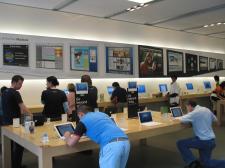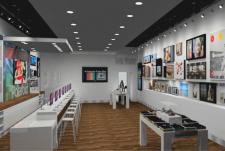It’s the time of year for saving money!
I had a Facebook interchange with a musician whom I respect who voiced his objections to an article I posted about a local High-End stereo store. He did not enjoy his visit with them. He felt he was treated as if he knew nothing and was “talked down to.” I wish that this was the first time anyone had ever told me something like that about a High End Emporium. It isn’t.
 Many of the high-end shops I’ve visited over the years have similar layouts – a greeting area flanked by listening rooms. The customer comes in and is sized up by the sales staff. Are they an old-guy audio club member regular or a newbie? After a verbal size-up the customer is led into the room with the gear that they might be interested in purchasing. With minor variations for additional interactions, both good and bad, that’s basically the way it’s gone since the first parts, tubes, radio, and hi-fi stores opened in the late 40’s. The guy behind the counter knew stuff and the customer was directed to the product that would serve their needs.
Many of the high-end shops I’ve visited over the years have similar layouts – a greeting area flanked by listening rooms. The customer comes in and is sized up by the sales staff. Are they an old-guy audio club member regular or a newbie? After a verbal size-up the customer is led into the room with the gear that they might be interested in purchasing. With minor variations for additional interactions, both good and bad, that’s basically the way it’s gone since the first parts, tubes, radio, and hi-fi stores opened in the late 40’s. The guy behind the counter knew stuff and the customer was directed to the product that would serve their needs.
Maybe part of the problem is that stereo stores still function on the premise that the guy behind the counter knows more than the customer (which is generally true) in an age where expertise has been devalued to the point where it is viewed more often with suspicion than acceptance. “He’s an expert, he will lie to me…”
 The concept of salespersons as the gatekeepers of product doesn’t sit well with many potential customers, especially younger buyers. The Apple Store is an example of a buying environment that is fundamentally different form a traditional high-end store even though the product offerings in both locations overlap somewhat. For every audiophile buying a pair of Grados at their local high-fi emporium there are a 100 Millennials buying a pair of Beats. Why? Because they are comfortable buying something in the Apple Store. Most High-End stores aren’t as comfortable for those same buyers…
The concept of salespersons as the gatekeepers of product doesn’t sit well with many potential customers, especially younger buyers. The Apple Store is an example of a buying environment that is fundamentally different form a traditional high-end store even though the product offerings in both locations overlap somewhat. For every audiophile buying a pair of Grados at their local high-fi emporium there are a 100 Millennials buying a pair of Beats. Why? Because they are comfortable buying something in the Apple Store. Most High-End stores aren’t as comfortable for those same buyers…
What’s the solution? I think that stores have to think about redoing their physical model so they are more welcoming for younger and casual buyers. Open layouts with multiple stations or areas where customers can try stuff out, explore, and when ready, ask for assistance, might be a step in the right direction.
 While I wouldn’t recommend completely abandoning the individual physical listening-room and advocate for only open-air layouts ala the Apple Store, I think that the anti-expert sentiment has had a major effect on retail design now and into the future. And I don’t see this trend changing any time soon, so a savvy retailer needs to adapt and create an environment that encourages participation and inclusion. That isn’t necessarily easy, it requires re-thinking the sales experience from the moment someone enters the store.
While I wouldn’t recommend completely abandoning the individual physical listening-room and advocate for only open-air layouts ala the Apple Store, I think that the anti-expert sentiment has had a major effect on retail design now and into the future. And I don’t see this trend changing any time soon, so a savvy retailer needs to adapt and create an environment that encourages participation and inclusion. That isn’t necessarily easy, it requires re-thinking the sales experience from the moment someone enters the store.
There is one advantage, and it is a huge one, that brick and mortar retailers have over other sales channels, such as the Internet. It’s the ability of the buyer to interact and play with the actual product. The best contemporary retailers exploit that advantage. It’s a unique sales experience that brick and mortar establishments must utilize to the fullest if they intend to thrive or even survive in the future…because ideally, all a retailer needs to do is put the product into the customer’s hands when they are in a receptive mood. Because if it’s the right product, it will do the rest…








